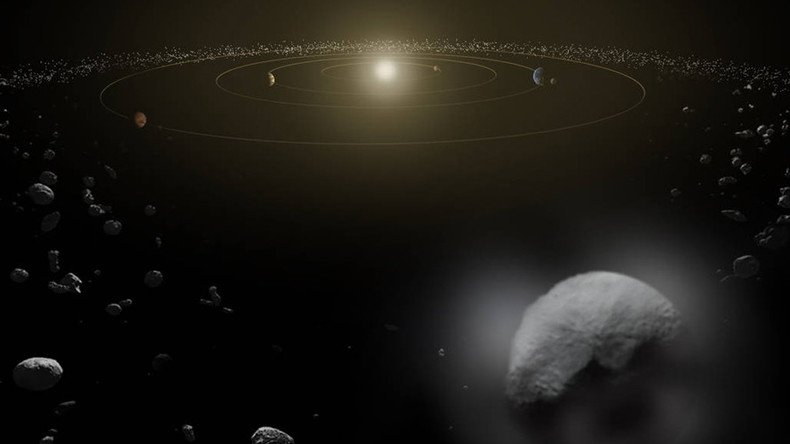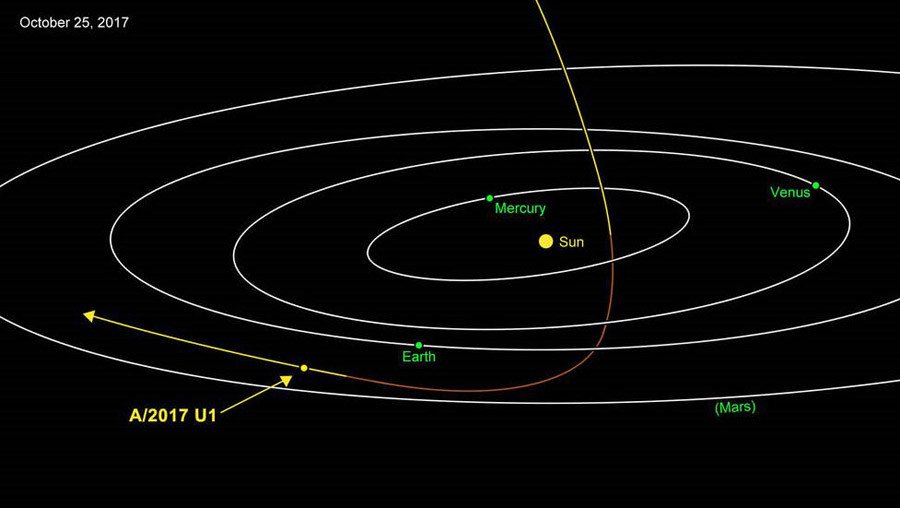Interstellar traveler: Speeding space rock is first to be seen in our solar system

Scientists believe they’ve just pinpointed the first interstellar comet or asteroid ever detected to pass through the solar system, speeding by at a phenomenal rate.
The scale of our star’s reach is so large that NASA says you could travel more than 13 billion km into deep space and still not escape the influence of the sun. The sheer distance makes the incursion of an alien object - dubbed A/2017 U1 - into the solar system a significant find, as it has traveled an incredible distance to register on the watchful telescopes of Earth.
READ MORE: Astronomers spot ring around pebble-shaped dwarf planet
The object, believed to be a comet or asteroid, was spotted by the University of Hawaii’s Pan-STARRS 1 telescope on October 19.
According to NASA, the 400-meter-diameter object is traveling at an incredible 25.5km per second, and is destined to vanish from the boundaries of our planetary network.
Small @Asteroid or @Comet (A/2017 U1) 'Visits' from Beyond the Solar System | Discovered by Pan-STARRS 1 #telescopehttps://t.co/pDMcxaPJzmpic.twitter.com/IvHqfoMGSR
— George Cee (@MrGeorgeCee) October 26, 2017
It dipped down from above the ‘ecliptic’, the general level along which most of the planets orbit our sun. Around October 14, the object made a steep turn under the solar system and passed by Earth at a distance of 23 million km.
Rocketing from the direction of constellation Lyra, little else is known about the origin of A/2017 U1. It’s thought the object could be made up of a conglomerate of space particles.

“We have long suspected that these objects should exist, because during the process of planet formation a lot of material should be ejected from planetary systems. What’s most surprising is that we’ve never seen interstellar objects pass through before,” said the Astronomy Institute of University of Hawaii’s Karen Meech.
NASA scientist Davide Farnocchia described the movement of the object as one of the most extreme he has ever witnessed.
“This is the most extreme orbit I have ever seen,” he said. “It’s going extremely fast and on such a trajectory that we say with confidence that this object is on its way out of the solar system and not coming back.”


